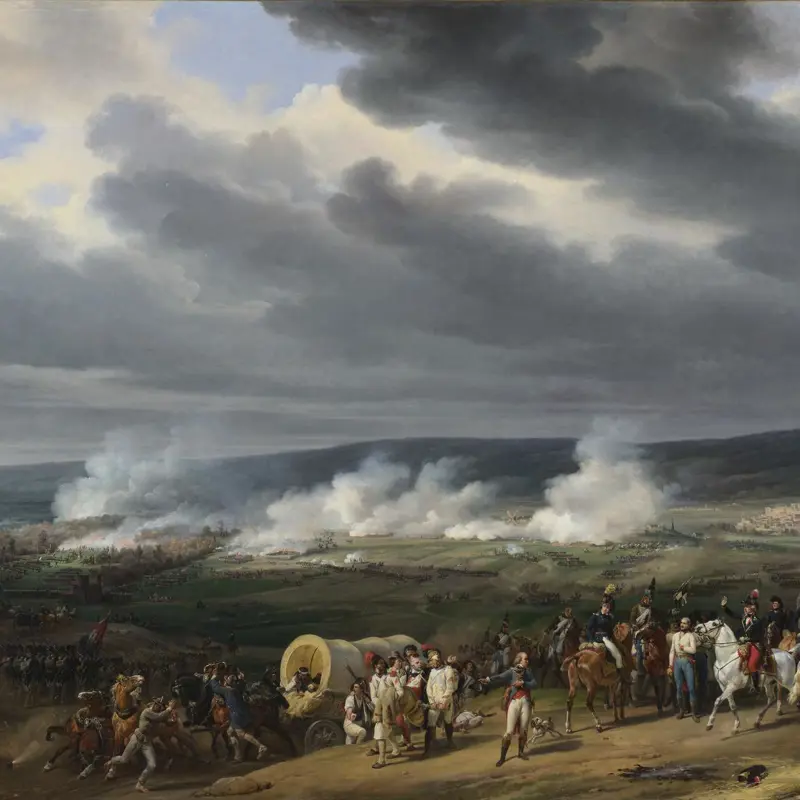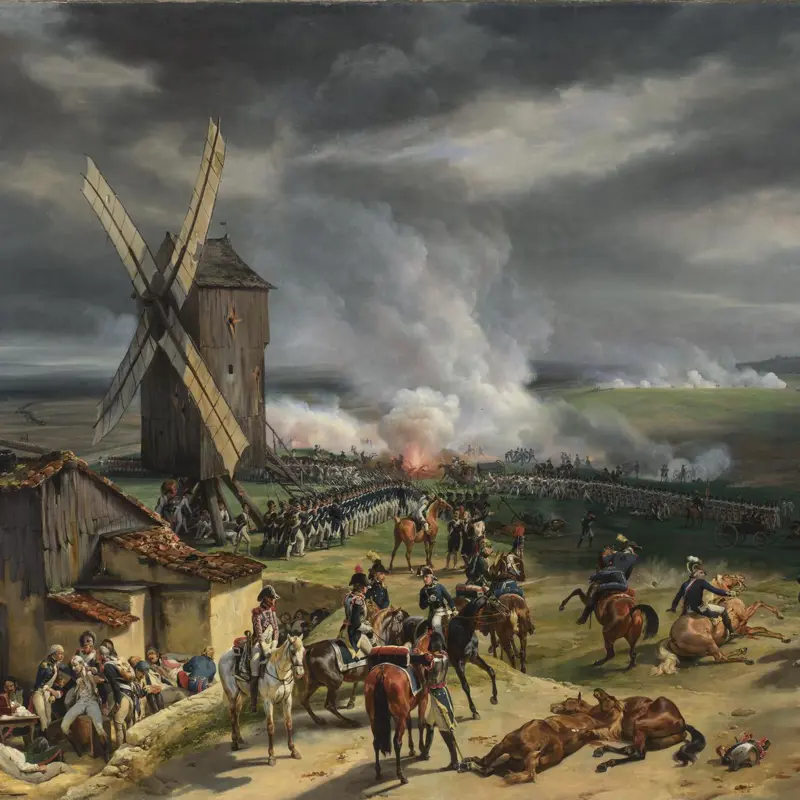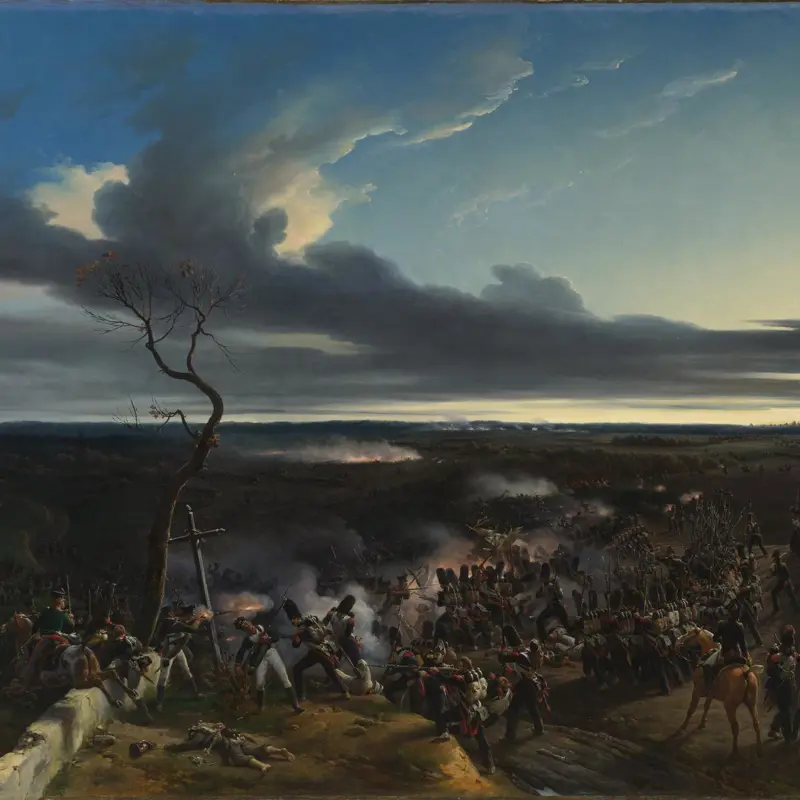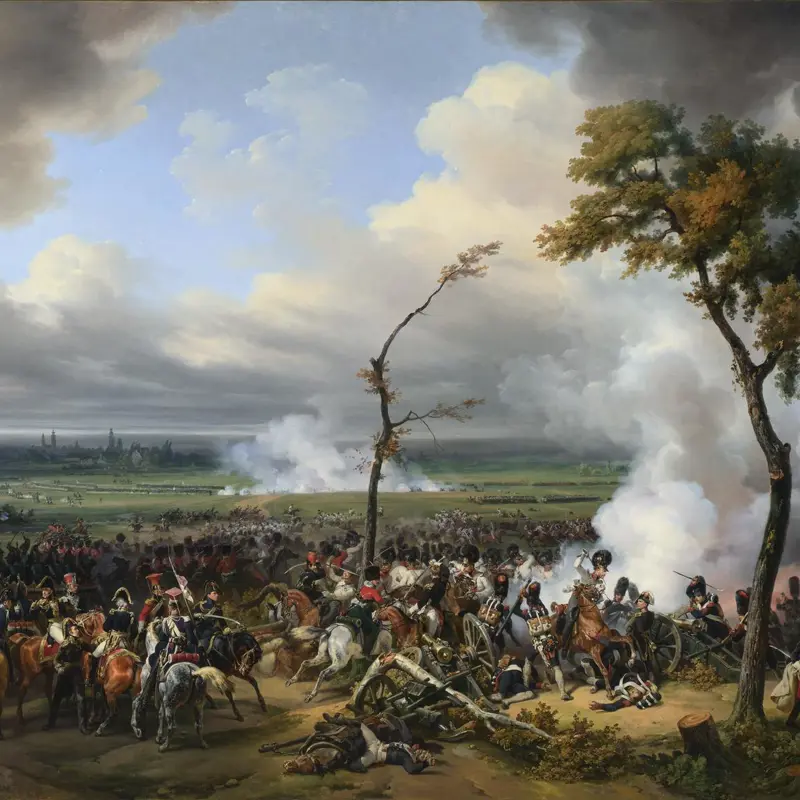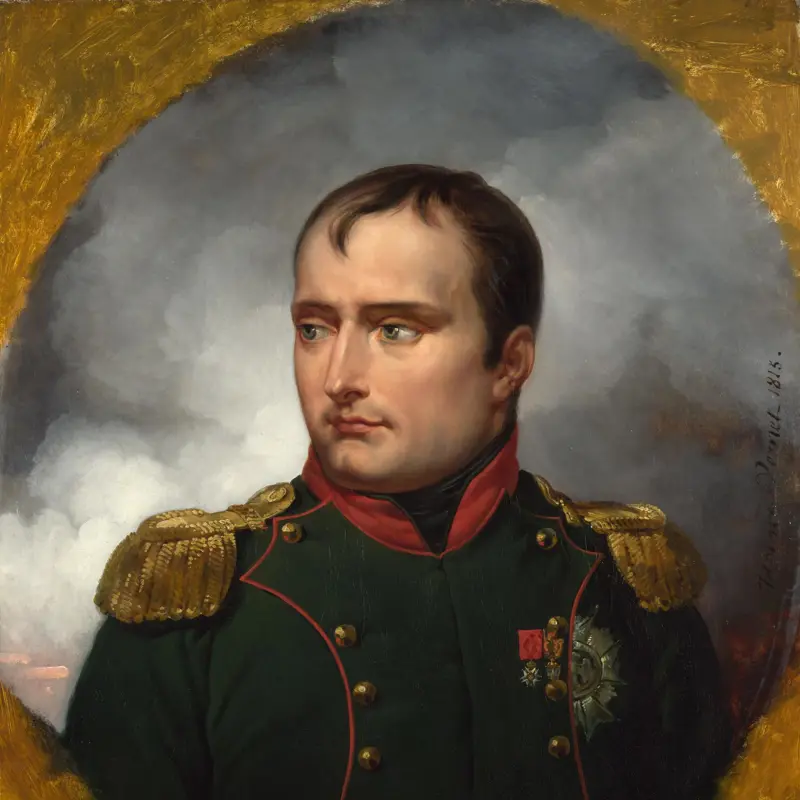Emile-Jean-Horace Vernet, 'The Battle of Valmy', 1826
About the work
Overview
The Battle of Valmy was the French army’s first major victory during the wars that followed the French Revolution of 1789. It was both a strategic and a psychological victory for the new French government and helped ensure the survival of the Revolution, which was to transform Europe. The battle took place on 20 September 1792 as Prussian troops, led by the Duke of Brunswick, marched towards Paris. The Prussian advance was halted near the village of Valmy in north-eastern France.
This was the last to be completed of the four battle scenes that Vernet painted for the duc d‘Orléans. Vernet organises the composition around a triangle of raised sunlit ground, its edges defined by rows of soldiers. He gives a prominent position to the old windmill around which the French command was based. Slightly left of centre, the duc d’Orléans and his younger brother, the duc de Montpensier, report on the battle to the comte de Rochambeau, their presence a reminder of their early commitment to the Revolution.
Key facts
Details
- Full title
- The Battle of Valmy
- Artist
- Emile-Jean-Horace Vernet
- Artist dates
- 1789 - 1863
- Part of the series
- Four Battle Scenes
- Date made
- 1826
- Medium and support
- Oil on canvas
- Dimensions
- 174.6 × 287 cm
- Inscription summary
- Signed; Dated
- Acquisition credit
- Bequeathed by Sir John Murray Scott, 1914
- Inventory number
- NG2964
- Location
- Not on display
- Collection
- Main Collection
- Previous owners
Provenance
Additional information
Text extracted from the ‘Provenance’ section of the catalogue entry in Martin Davies, with additions and some revisions by Cecil Gould, ‘National Gallery Catalogues: French School: Early 19th Century, Impressionists, Post-Impressionists, etc.’, London 1970; for further information, see the full catalogue entry.
Exhibition history
-
2018Louis-Phillipe and VersaillesChâteau de Versailles6 October 2018 - 3 February 2019
Bibliography
-
1957Martin Davies, National Gallery Catalogues: French School, 2nd edn (revised), London 1957
-
1970Davies, Martin, and Cecil Gould, National Gallery Catalogues: French School: Early 19th Century, Impressionists, Post-Impressionists etc., London 1970
-
2001
C. Baker and T. Henry, The National Gallery: Complete Illustrated Catalogue, London 2001
About this record
If you know more about this work or have spotted an error, please contact us. Please note that exhibition histories are listed from 2009 onwards. Bibliographies may not be complete; more comprehensive information is available in the National Gallery Library.
Images
About the series: Four Battle Scenes
Overview
Following the military defeat and abdication of Napoleon in 1815, the Bourbon monarchy was restored in France. These four large battle paintings were commissioned by the duc d'Orléans (1773–1850) who had returned to France after some 21 years in exile. In 1830 he became Louis-Philippe, King of the French.
Although painted during the period of the Bourbon Restoration, all four pictures – for which Vernet was paid 38,000 francs – show French victories during the previous era of the Revolutionary and Napoleonic wars. The duke had fought with the armies of the newly established French Republic at Jemappes and at Valmy, and was keen to demonstrate his Republican sympathies. The pictures were hung in prominent positions in the Palais-Royal in Paris and functioned as propaganda celebrating French military glory and the Duke’s own career and leadership. Completed over five years, the paintings are The Battle of Jemappes (1821), The Battle of Montmirail (1822), The Battle of Hanau (1824), and The Battle of Valmy (1826). Damaged by fire in the revolution of 1848, they were restored by Vernet himself.


